|
Displaying items by tag: analysis
As the first phase of the Eames House Conservation Project draws to a close, join Kyle Normandin, associate principal with Wiss, Janney, Elstner Associates and former GCI project manager; Lucia Dewey Atwood, director of the Eames Foundation's 250 Year Project; and Frank Escher of Escher GuneWardena Architecture, project architects for the phase one work, as they illuminate the critical role that science and investigation play in conservation.
They will discuss studies and conservation work completed at the Eames House to date—including analysis and treatment on tallowwood paneling, initial repairs to the building envelope, paint analysis, and investigation and replacement of the vinyl tile floor covering—as well as plans for the next phase of the project. Susan Macdonald, head of Field Projects at the GCI, will moderate the discussion.
A portrait of a younger Mona Lisa, which its owners claim was painted by Leonardo Da Vinci before his more famous version, has gone on display. The painting is being exhibited in public for the first time in Singapore.
Its owners say expert tests and analysis confirm Da Vinci painted it 10 years before the better-known version. But its authenticity is disputed. Da Vinci expert Martin Kemp said it was "just another copy of the Mona Lisa, an unfinished one, and no more than that."
A zigzag engraving on a mussel's shell may transform scientific understanding of what has long been considered a defining human capacity: artistic creativity.
Until now, the earliest evidence of geometric art was dated from 70,000 to 100,000 years ago. Scratched into rocks found in South African caves, those engravings signified behavioral modernity: Homo sapiens' unique cognitive journey into a sophisticated world of abstraction and symbol.
But new analysis of an engraving excavated from a riverbank in Indonesia suggests that it's at least 430,000 years old—and that it wasn't made by humans, scientists announced Wednesday. At least it wasn't made by humans as most people think of them, meaning Homo sapiens.
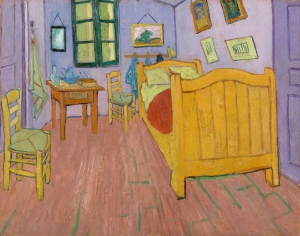
On May 1, 2013 the Van Gogh Museum in Amsterdam will re-open after being closed for months due to ongoing renovations. The exhibition that will inaugurate the newly updated space is Van Gogh at Work, an extensive overview of Vincent van Gogh’s (1853-1890) oeuvre that happens to coincide with the 160th anniversary of the artist’s birth. What the Van Gogh Museum kept quiet until now is that the exhibition will reveal research amassed during an eight-year analysis of the artist’s work.
The project, which was led by scientists at Shell in collaboration with the Dutch Cultural Heritage Agency and curators at the Van Gogh Museum, entailed analyzing hundreds of van Gogh’s canvases, pigments, letters, and notebooks. The research provided previously unknown insights into van Gogh’s temperament and personality. Contrary to popular belief spurred by the artist’s struggles with mental illness, van Gogh was not a manic painter, but painstakingly methodical. The use of an electric microscope and X-ray fluorescence spectrometry revealed that van Gogh used grids to accurately portray proportions and to create precise depth of field in his early landscapes.
Another insight the researchers uncovered involved van Gogh’s pigments. Tests done at the Shell Global Solutions labs revealed that some of the pigments used by van Gogh were chemically unstable and faded prematurely. In particular, scientists discovered that the color of the walls in van Gogh’s seminal painting The Bedroom was inaccurate. Van Gogh had used red and blue paints to create a violet hue but the red faded, leaving behind a much bluer color than he intended.
Beginning in September, the Van Gogh Museum will exhibit two versions of The Bedroom – one from its own collection and one from the Art Institute of Chicago’s collection. Van Gogh painted three versions of his room in Arles between 1888 and 1889 and all three of them have the same blue-hued walls. The presentation will also include a digital reconstruction of what the painting may have looked like when van Gogh first created it.
Van Gogh at Work will be on view through January 12, 2014.
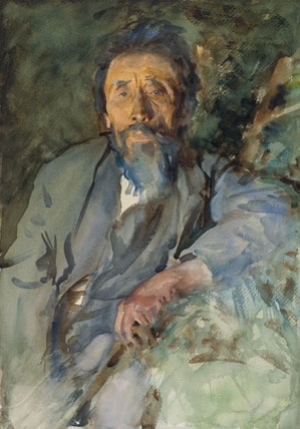
New York’s Brooklyn Museum and Boston’s Museum of Fine Arts are joining forces to present a landmark exhibition of John Singer Sargent’s watercolors (1856-1925). The exhibition, aptly titled John Singer Sargent Watercolors, will bring together 93 works acquired by both museums during the early 20th century. The Brooklyn Museum’s 38 watercolors were largely purchased form Sargent’s 1909 debut exhibition in New York and The MFA’s works were acquired from a New York Gallery in 1912.
The institutions have been working together on a year-long study of Sargent’s watercolors, which he painted fervently. During his long career, Sargent created over 2,000 watercolors depicting everything from the English countryside to Venetian scenes as well as paintings of the Middle East, Montana, Maine, Florida, and the American west. Sargent painted a number of watercolor portraits of Bedouins and fishermen from the Middle East as well as the native people of the American west. A section of the exhibition will be devoted to the findings from the museums’ extensive study; the analysis revealed new insights into Sargent’s drawing techniques, paper preparation, and use of pigments.
John Singer Sargent Watercolors will go on view at the Brooklyn Museum on April 5, 2013 where it will remain until July 28, 2013. The exhibition will then travel to Boston’s Museum of Fine Arts where it will stay from October 13, 2013 until January 20, 2014. The show will make a final appearance at Houston’s Museum of Fine Arts in 2014.
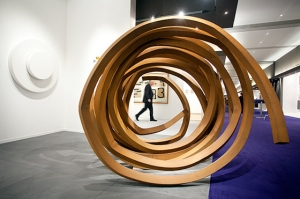
China’s art market experienced a substantial boom in 2011, bumping the United States out of its top spot and ultimately becoming the world’s principal market for art and antiques. In 2012, amid the uncertain global economy, China’s growth began to slow and its art and antiques market shrank by almost a quarter. This deceleration allowed the U.S. to regain its title as the world’s most significant art market.
The power shift was announced as part of the highly anticipated TEFAF Art Market Report compiled by Dr. Clare McAndrew. McAndrew, a cultural economist who specializes in the fine and decorative art market, is the founder of Arts Economics, a company commissioned by The European Fine Art Foundation to provide a yearly analysis of the worldwide art market. The report coincides with the beginning of TEFAF Maastricht, the Foundation’s annual art fair, which begins March 15, 2013 in the Netherlands and runs through March 24, 2013.
Slowing economic growth and a lack of high quality, high priced items on the market are to blame for China’s slip to the second most influential art market. While auction sales dropped by 30% in China, U.S. sale figures were up 5% to $18.4 billion. In 2012, buyers opted to minimize financial risk by buying works by well-known artists at the top end of the market with Post-War and Contemporary art performing the strongest.
Dr. McAndrew will present her findings at the TEFAF Art Symposium on Friday, March 15, 2013 in Maastricht.
A stone sculpture of what appears to be a goddess was uncovered in Brooklyn, NY last summer at the site of an old spice warehouse hub. Local developer, Two Trees Management Company, discovered the sculpture while building a mixed-use tower at the location.
The armless nude who measures about three feet tall and weighs approximately 400 pounds, was trapped in demolition debris from the mid-20th century. Excavating equipment damaged the sculpture, affectionately named Ginger, before anyone noticed it. Other artifacts such as 18th century foundation stones and pottery shards were also found at the site.
Experts believe that Ginger could have originally served as a garden ornament, brothel advertisement or ship ballast and that the sculptor was most likely not formally trained. Scientists will analyze Ginger this spring in hopes of learning more about the artwork’s maker and age. Until then, Ginger will remain on view at the Two Trees headquarters.
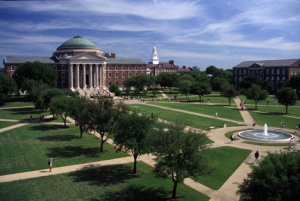
Dallas’ Southern Methodist University and Philadelphia’s Cultural Data Project have joined forces to launch the National Center for Arts Research. The Center, which is the first of its kind in the United States, will conduct, analyze, and assemble arts research as well as investigate issues concerning arts management and patronage. The Center will make all of its finding public to art leaders, funders, policymakers, researchers, and the general public.
Through extensive studies and follow-up analysis, the National Center for Arts Research plans to create a comprehensive depiction of the health of the country’s arts sector. The Center, which launched on February 13, 2013, plans to collaborate with I.B.M. to create an interactive dashboard that will allow arts organizations to compare themselves to their peers.
Jose Bowen, dean of the Meadows School of the Arts at Southern Methodist University said, “Arts organizations must have a more research-driven understanding of their markets and industry trends in order to more deeply engage existing audiences and reach new ones.” Along with management and patronage, the National Center for Arts Research will specialize in the impact of the arts on communities across the U.S. as well as fiscal trends and stability of the arts in the U.S.
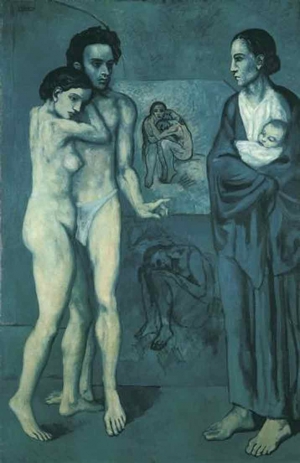
On view through April 12, 2013 at the Cleveland Museum of Art, Picasso and the Mysteries of Life: Deconstructing La Vie is the first exhibition devoted to Pablo Picasso’s (1881-1973) complex masterpiece, which defined his well-known Blue Period. A cornerstone of the museum’s collection, La Vie (1903) is accompanied by related works on loan from Barcelona’s Museu Picasso as well as works by Francisco Goya (1746-1828), Albrecht Dürer (1471-1528), and Auguste Rodin (1840-1917) from the Cleveland Museum’s own collection.
The exhibition uses x-radiographs, infrared reflectographs, and other scientific methods to delve into the process behind La Vie. Displayed on iPads, the technological investigation illustrates Picasso’s creative process and how he altered the painting’s composition considerably before deeming the work complete.
Picasso drew preliminary sketches for La Vie in May of 1903. At the time, he was a young, unknown artist who still lived in his parents’ home in Barcelona. The first sketches depicted an artist in his studio and evolved into a more intricate scene meant to evoke thoughts about life and art and the intersection of the two. A solid analysis of La Vie has always eluded scholars due to its enigmatic subject, early history, and its relationship to Picasso’s other works from this time. However, the painting has never been examined as thoroughly and in-depth as by the Cleveland Museum of Art.
Picasso and the Mysteries of Life strives to make sense of the work by exploring the subjects of the painting. Carles Casagemas, the gaunt man featured in the work’s left foreground, was a friend of Picasso’s and a fellow artist. Casagemas committed suicide in 1901, prompting Picasso to contemplate the glorification of suicide and the bohemian lifestyle in modern art and culture. The woman standing behind Casagemas in La Vie has been identified as Germaine Pichot, his lover and a contributor to his suicide. Pichot stands as a symbol of Picasso’s coded representation of women and in a broader sense, as the fatal woman often portrayed in modern art.
A 163-page book by William H. Robinson, the Cleveland Museum’s curator of modern European art, accompanies the exhibition. The book further explores the role of La Vie in Picasso’s creative process as well as the important issues in the modernist culture of the 19th and 20th centuries that affected Picasso and his work. Robinson explores how Spanish and French literature affected Picasso’s Blue Period paintings, the impact of Rodin’s large retrospective of 1900 on the young artist, and Picasso’s ongoing struggle to fully understand the notions of fate and destiny.
Deconstructing La Vie is the inaugural exhibition in the Cleveland Museum of Art’s new Focus Gallery.
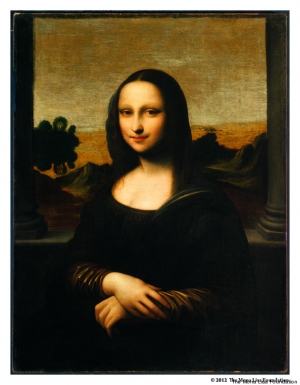
Shortly before World War I English art collector, Hugh Blaker, found a portrait now dubbed the Isleworth Mona Lisa in Isleworth, London. For the past 35 years the Zurich-based Mona Lisa Foundation has been working to prove that the painting predates Leonardo da Vinci’s 16th century masterpiece by 11 to 12 years. The experts involved based this conclusion on a series of regression tests, mathematical comparisons, and historical and archival records.
While at least one da Vinci expert is doubtful, the researchers involved in the Mona Lisa Foundation’s project are confident in their claim. Mathematical tests have proven that both of the sitters are in exactly the same place. Such accuracy was typical of da Vinci. Sporting the same enigmatic smiles, the posture, hands, faces, and expressions bear a striking resemblance.
Dissidents, including Oxford art historian Martin Kemp, think that the Isleworth Mona Lisa lacks the subtle details of the original. While the Isleworth Mona Lisa does look like a younger version of the original, the veil, hair, and the translucent layer of the sitter’s dress are lacking in quality.
The Isleworth Mona Lisa turned up in the home of an English nobleman during the late 19th century and was shipped to the United States during the First World War. The painting was subject to analysis in Italy and was eventually taken to Switzerland where it remained in a bank vault for 40 years. The Isleworth Mona Lisa was unveiled by the Foundation on Thursday in Geneva and evidence of the painting’s authenticity was presented at the University of California.
|
|
|
|
|